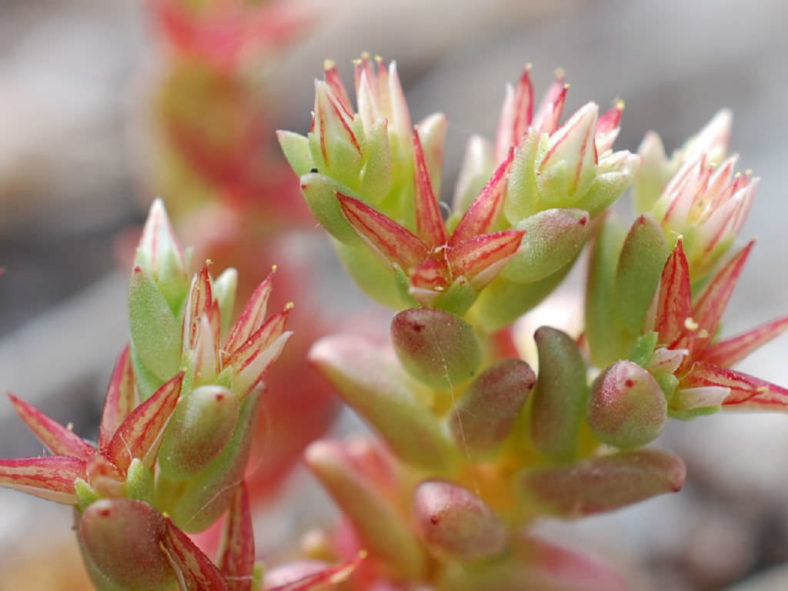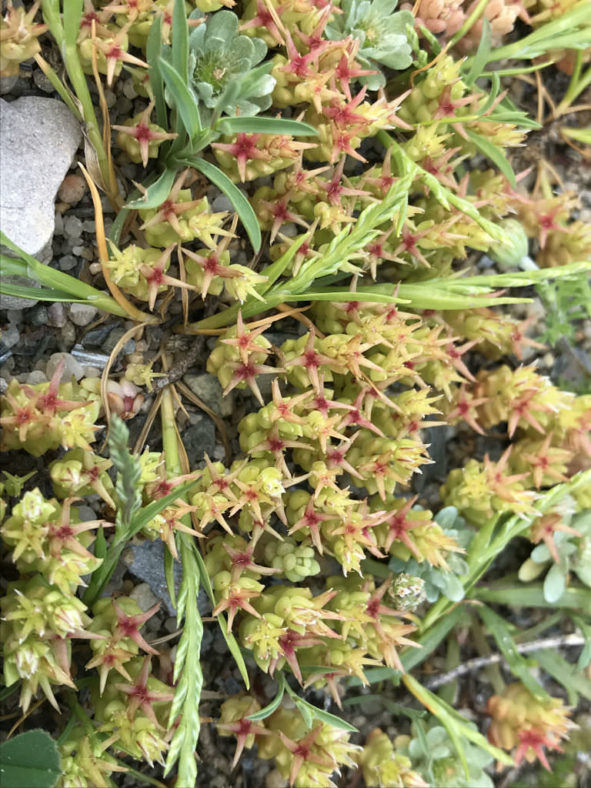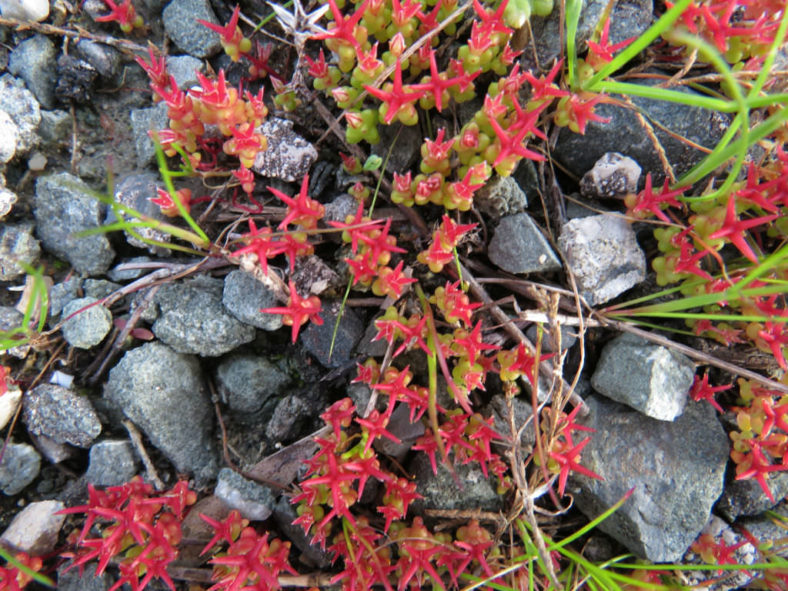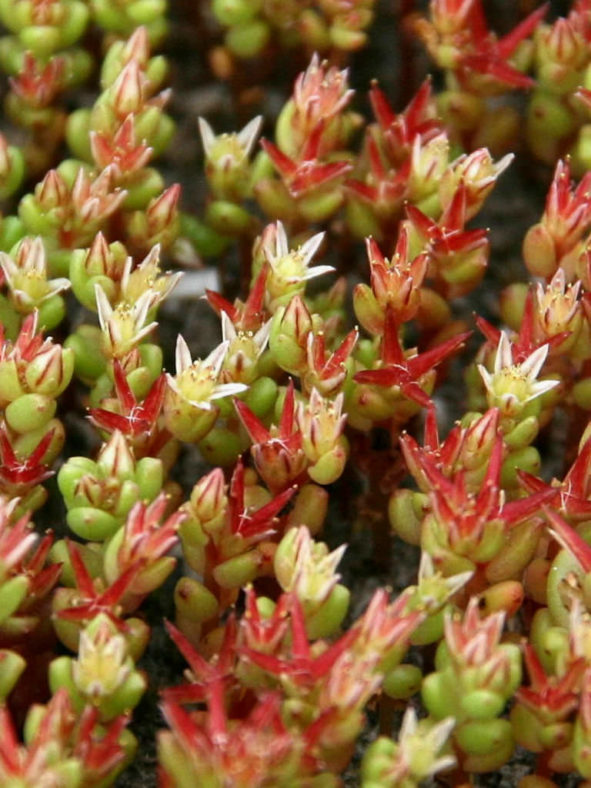Scientific Name
Sedum caespitosum (Cav.) DC.
Common Name(s)
Broad-leaved Stonecrop, Tiny Stonecrop
Synonym(s)
Aithales caespitosa, Crassula caespitosa, Crassula diffusa, Procrassula caespitosa, Sedum cespitosum, Sedum rubens subsp. caespitosum, Tillaea caespitosa,
Scientific Classification
Family: Crassulaceae
Subfamily: Sempervivoideae
Tribe: Sedeae
Genus: Sedum
Etymology
The specific epithet "caespitosum (kess-pi-TOH-sum)" means "turf" and refers to the growth habit of the plant.
Origin
Sedum caespitosum is native to southern Europe, parts of the Middle East, and northern Africa.
Description
Sedum caespitosum, also known as Sedum cespitosum, is a small annual succulent with erect, usually solitary, or sometimes branched stems. It can grow to 2.4 inches (6 cm) tall, slowly spreading and forming a dense mat. The leaves are thick, fleshy, green or red in full sun, egg-shaped, measuring up to 0.2 inches (0.5 cm) long.
The flowers are star-shaped, white, often tinged red or pinkish-red, have a red or green keel, and appear in short terminal cymes from spring to summer.

How to Grow and Care for Sedum caespitosum
Light: These succulents grow best in locations where they will enjoy the full sun for at least six hours daily. Most species will tolerate partial shade but will not thrive in deep shade.
Soil: Sedums do not like to sit in waterlogged soil, so drainage is essential to prevent root rot. Choose a gritty, well-draining soil.
Watering: Sedum plants are drought-tolerant but do need some water. They do their best with regular watering from spring through fall. Water thoroughly and wait for the soil to dry out before watering again.
Fertilizing: A balanced organic fertilizer each spring is generally all Sedums that require. Feeding is unnecessary as long as the plants are divided annually and provided with fresh soil.
Repotting: Sedums in containers require little more care than those in gardens. Repot your plants when they outgrow their current pot by moving them to a larger container to hold the plant better.
Propagation: Once you have one Sedum, it is easy to make more by taking stems or leaf cuttings and dividing the plant. Sedums are also easy to grow from seed.
Learn more at How to Grow and Care for Sedum.
Toxicity of Sedum caespitosum
Sedums are not listed as toxic for people but can be mildly toxic to pets and children.
Links
- Back to genus Sedum
- Succupedia: Browse succulents by Scientific Name, Common Name, Genus, Family, USDA Hardiness Zone, Origin, or cacti by Genus
Photo Gallery
Click on a photo to see a larger version.


